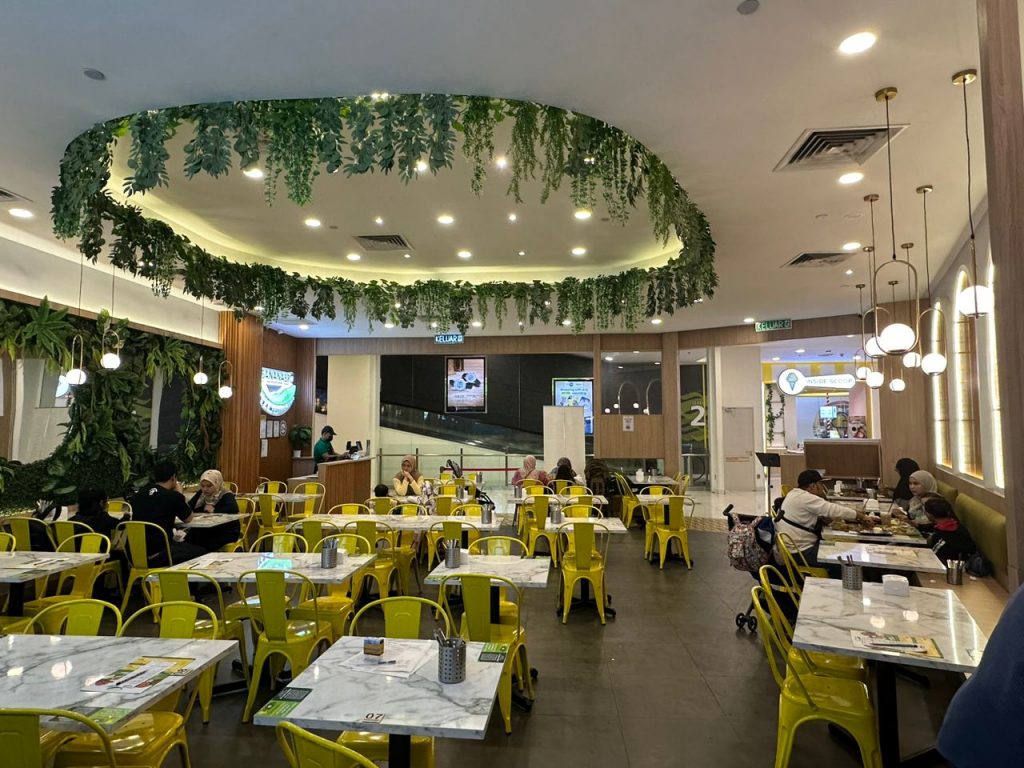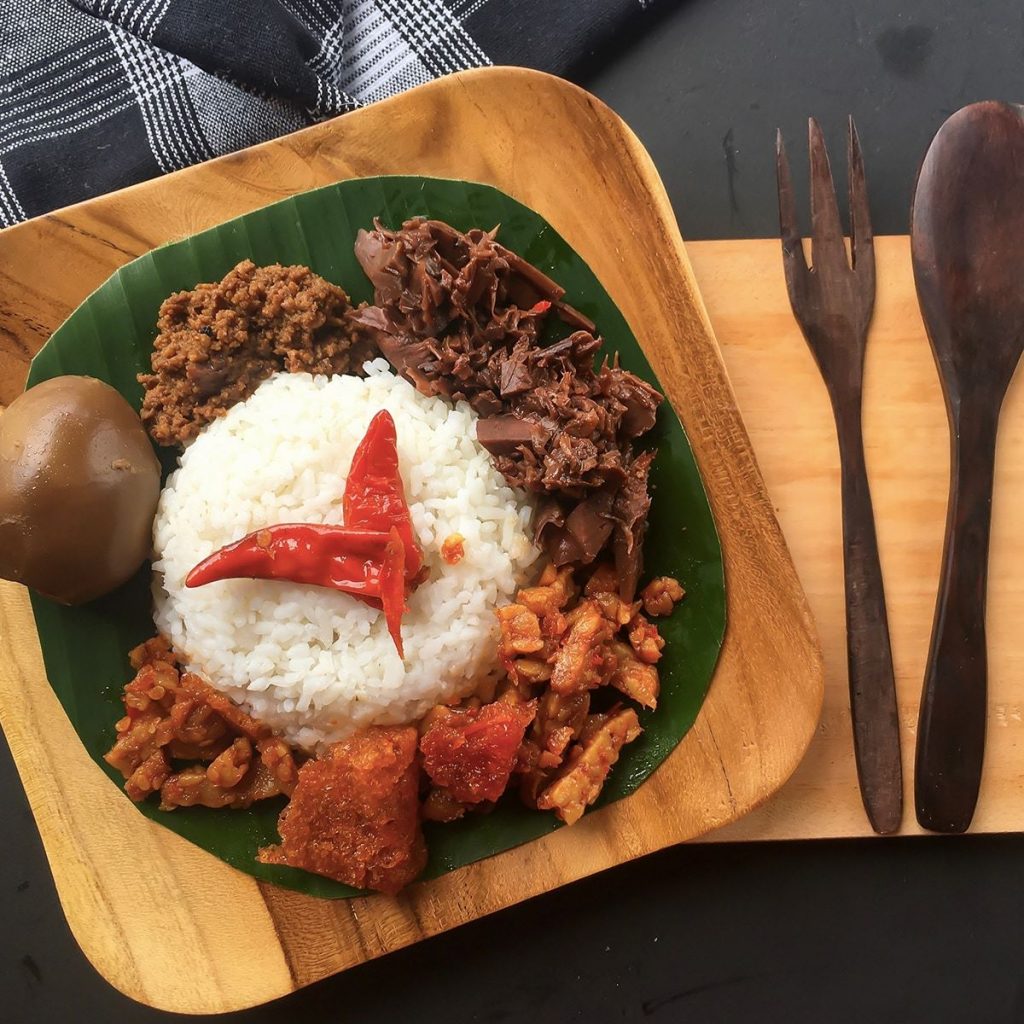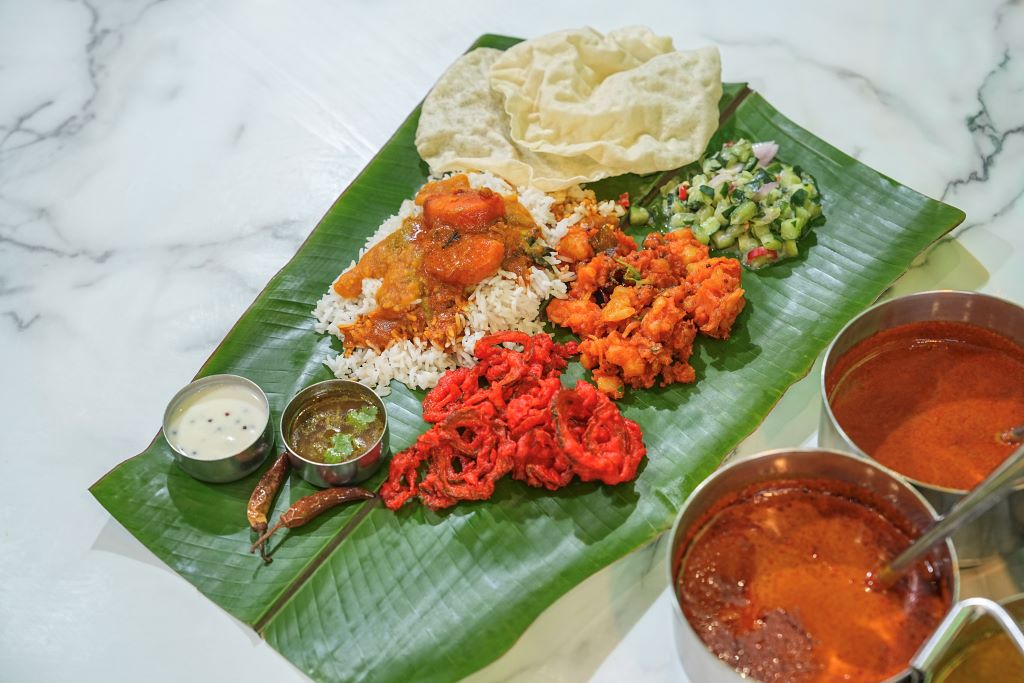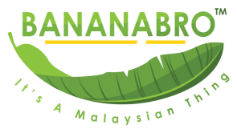In this article, we are going to explore the difference between banana leaf rice Malaysia vs Indonesia. Embark on a flavorful journey as we delve into the heart of these two Southeast Asian culinary giants. At the center of our exploration is the beloved tradition of banana leaf rice. It’s a culinary experience that goes beyond the plate.
In both Malaysia and Indonesia, banana leaf rice isn’t just a meal; it’s a popular dish and a symbol of shared moments and diverse tastes. This article aims to peel back the layers of this tradition. It compares how these neighboring nations bring their unique twists to the table. The exploration delves into the cultural significance attached to banana leaf rice in each country. It also highlights the variations in preparation methods and accompanying dishes that contribute to the richness of this shared culinary heritage.
Get ready to savor the essence of banana leaf rice in Malaysia and Indonesia. Stay tuned for an extra dash of flavor with BananaBro’s distinctive perspective woven into the mix. Let’s unfold the story of these two nations, one banana leaf at a time.
Banana Leaf Rice in Malaysia
Malaysian banana leaf rice is more than just a meal. It’s one of the national dishes deeply rooted in the rich tapestry of Malaysia. Imagine the vibrant streets filled with the aroma of spices and the clinking sounds of metal plates – that’s the Malaysian version of banana leaf rice culture. This culinary tradition extends beyond mere sustenance; it is an immersive experience that embodies the essence of Malaysian gastronomy. The intricate flavors and cultural significance make it a culinary journey through the heart of Malaysia. It’s a dish that narrates stories of tradition, community, and the diverse flavors that define the Malaysian culinary landscape. The tradition finds its roots in the diverse cultural influences that have shaped Malaysia over centuries. Malay, Chinese, and Indian elements converge to create a unique culinary identity.
This Indian cuisine fusion is evident in the variety of banana leaf rice dishes. Whereby each are telling a story of cultural harmony. From the aromatic nasi briyani, influenced by Indian flavors, to the savory rendang with its Malay origins. Malaysian banana leaf rice encapsulates the essence of the nation’s cultural diversity. It showcases a harmonious blend of culinary influences, creating a rich tapestry of flavors representative of Malaysia’s multicultural heritage.

Once you stepped into any BananaBro outlets in Malaysia, you’ll be greeted by a symphony of colors and flavors. One cannot discuss Malaysian banana leaf rice without mentioning some of its star players. The BananaBro signature, for instance, boasts an assortment of steamed rice, snake gourd, cucumber yogurt. It also features an array of curries such as mutton curry, crab curry, lamb curry, and dhal. This dish is a testament to the vibrancy of Malaysian food.
All-time Favorite
Another crowd favorite is the Mutton Varuval, a tantalizing dish that showcases the perfect balance of spices. Then there’s the ever-popular Chicken 65, a crispy and flavorful delight. These dishes not only satisfy the taste buds. They also embody the culinary diversity that makes Malaysian cuisine a gastronomic adventure.
What adds an extra layer of fascination to Malaysian banana leaf rice (Malaysian nasi) is its regional variations. The preparation and presentation can vary significantly from one state to another, offering a unique twist to this beloved dish.
In Regional Differences
In the northern regions, you might find banana leaf rice accompanied by a generous serving of fish curry. Hence, reflecting the influence of coastal flavors. Head south, and the dishes might be richer in coconut milk, showcasing the impact of Malay culinary traditions. As one of the popular Malay dishes, this savoury rice dish usually comes with complimentary side dishes. There are hard-boiled egg, spicy shrimp paste and sambal sotong (spicy squid with thick gravy) too. The east brings its own flair, with unique spices and preparation methods that set this traditional dish apart.
Exploring these regional differences is like embarking on a culinary journey through the heart of Peninsular Malaysia. It’s not just a meal; it’s an exploration of the nation’s diverse landscapes and cultural heritage.
Banana Leaf Rice in Indonesia
Indonesia, a diverse archipelago, boasts a rich tapestry of cultures that significantly shape the tradition of serving food on banana leaves. This practice is deeply rooted in the communal nature of Indonesian society, where sharing meals holds cultural significance. The use of banana leaves as a serving platform is a nod to the nation’s agrarian heritage. Plus, it is resonating with the close connection Indonesians maintain with nature.

Indonesia’s Nasi Liwet (Source: Wikimedia)
Indonesia’s culinary landscape is as diverse as its people, and this diversity is reflected in the array of banana leaf rice dishes. Nasi Liwet, a Javanese specialty, is a fragrant rice dish cooked with coconut milk, herbs, and spices, served with a selection of side dishes. Meanwhile, Nasi Tumpeng, often reserved for special occasions, presents a cone-shaped arrangement of rice surrounded by various savory items, symbolizing gratitude and good fortune. You can find these delicious Indonesian cuisine in famous restaurant to roadside stalls.

Nasi Gudeg (Source: Indonesia Travel)
As one traverses the Indonesian archipelago, the nuances in banana leaf rice preparations become apparent. In Java, the heartland of Indonesian culture, Nasi Gudeg takes the spotlight, featuring young jackfruit stewed in coconut milk. On the island of Sumatra, owns their version of Rendang. A flavorful and spicy meat dish and often graces the banana leaf platter. These regional variations showcase the diverse flavors and culinary expertise that define Indonesia’s banana leaf rice offerings.
This dynamic interplay of cultural influences, popular varieties, and regional differences renders banana leaf rice in Indonesia a fascinating journey through the nation’s vibrant and varied culinary heritage.
Comparison: Malaysia vs. Indonesia
Now the golden time! Join us in comparing the difference between banana leaf rice Malaysia vs Indonesia. Let’s go!
Presentation and Serving Style
In Malaysia, the presentation of banana leaf rice is a visual feast. The vibrant hues of various curries, chutneys, and condiments arranged on a fresh banana leaf create a picturesque spread. The serving style is often communal. Why? Because it is to encourage a shared dining experience where friends and family gather around a large banana leaf. On the other hand, Indonesia adopts a similar communal approach but varies in presentation. The cone-shaped Nasi Tumpeng, a staple food for celebrations, stands as a centerpiece, embodying the spirit of togetherness.
Flavor Profiles
Malaysian banana leaf rice is renowned for its bold and diverse flavor profiles. From the fiery notes of Chicken Curry and crab curry, to the aromatic richness of Fish Curry or lamb curry, each dish contributes to a symphony of tastes. The use of curry powder, chilli paste, coconut milk base, pinch of tamarind paste, and an array of spices defines the Malaysian cuisine palette. In Indonesia, the regional versions are equally robust but often take on a more nuanced and regional character. The sweetness of coconut milk in Nasi Liwet or the complex spiciness of Rendang reflects the diverse culinary traditions across the archipelago.
Cultural Significance
In Malaysia, banana leaf rice extends beyond being a meal—it’s a cultural experience. The act of eating with one’s hands, adds a personal touch, emphasizing a connection with the food. Additionally, the communal aspect reinforces the values of sharing and togetherness. In Indonesia, banana leaf rice is deeply ingrained in cultural celebrations, symbolizing gratitude and abundance. The cone-shaped Nasi Tumpeng, for example, is often part of significant events, marking the importance of communal joy and blessings.
This comparison between Malaysia and Indonesia’s banana leaf rice showcases the culinary diversity. Moreover, it also shows the cultural nuances that make each experience unique. Whether it’s the vibrant presentation, the distinct flavor profiles, or the cultural significance, both countries contribute to the richness of the banana leaf rice tradition in their own delightful ways.
BananaBro’s Take on Banana Leaf Rice
Step into the world of BananaBro, where passion meets tradition. BananaBro is not just a restaurant serving indian cuisine; it’s an embodiment of a commitment to delivering authentic South India with Malaysia original version of banana leaf rice experiences. Established with a love for culinary traditions, BananaBro strives to be a home for those seeking the true essence of this beloved dish.
Signature Offerings

BananaBro takes banana leaf rice to new heights with its signature offerings. Picture a banana leaf adorned with fragrant rice, accompanied by an array of curated curries that dance on your taste buds. The BananaBro Carving Set, a symphony of traditional dishes featuring savoury rice dish, snakegourd, cucumber yogurt, and a variety of curries including chicken, fish, crab, and dhal, is a testament to the restaurant’s dedication to creating a memorable dining experience. The Ala Carte Menu boasts delights like Mutton Varuval, Chicken 65, Prawn Masala, Butter Chicken, Fried Squid Ring, and Vegetarian options like Gobi Manchurian and Onion Pakora. The Signature Drinks, including Teh Tarik Lawa, Mango Lassi, Sunset Lime, and Lychee Juice, complement the spicy notes, elevating the overall experience.
Culinary Approach
BananaBro brings a fresh perspective to the traditional white rice experience not like other banana leaf rice places. While honoring the roots of this cherished dish, BananaBro infuses its own culinary artistry. The chefs at BananaBro understand that tradition is a living entity, and they embrace it with innovation. The careful selection of ingredients, the meticulous preparation, and the presentation reflect BananaBro’s commitment to quality and authenticity. The culinary approach goes beyond just creating a meal; it’s about crafting an experience that resonates with the modern palate while staying true to the heart of the tradition.
In the realm of banana leaf rice, BananaBro stands as a beacon of culinary excellence, inviting patrons to indulge in the rich tapestry of flavors and traditions. With a commitment to authenticity and a touch of innovation, BananaBro continues to redefine and elevate the banana leaf rice experience for connoisseurs and newcomers alike.
Conclusion: Banana Leaf Rice Malaysia vs Indonesia
As our culinary journey through the banana leaf rice Malaysia vs Indonesia comes to a close, it’s evident that this is more than just a meal—it’s a cultural experience. The aromatic symphony of spices, the vibrant presentation on fresh banana leaves, and the communal spirit of shared meals encapsulate the essence of these Southeast Asian nations.
In Malaysia, the cultural influences blend seamlessly, creating a diverse tapestry of flavors that reflect the nation’s multicultural identity. From the fiery rendang to the aromatic biryani, each dish tells a story of harmony and shared heritage. The regional variations add an extra layer of fascination, inviting us to explore the diverse landscapes and culinary nuances across the country.
Indonesia, with its rich cultural diversity, presents a kaleidoscope of flavors in its banana leaf rice offerings. From the cone-shaped Nasi Tumpeng to the fragrant Nasi Liwet, each dish is a celebration of Indonesia’s agrarian heritage and the close connection its people maintain with nature. The regional differences showcase the culinary expertise that defines each island’s unique offerings.
And the Winner?….*Drumroll*
The comparison between Malaysia and Indonesia’s banana leaf rice highlights not only the culinary diversity but also the cultural nuances that make each experience distinctive. Whether it’s the vibrant presentation, the bold flavor profiles, or the cultural significance, both countries contribute to the richness of the banana leaf rice tradition in their own delightful ways.
And in the midst of this flavorful journey, BananaBro emerges as a culinary maestro, infusing tradition with innovation. The signature offerings, from the BananaBro Carving Set to the tantalizing Ala Carte Menu, showcase a commitment to authenticity and a touch of modern flair. BananaBro’s culinary approach goes beyond creating a meal; it crafts an experience that resonates with both tradition and the contemporary palate.
So, as we put down our metaphorical banana leaves and the battle of banana leaf rice Malaysia vs Indonesia, we invite you to savor not just the dishes but the stories, the traditions, and the cultural tapestry woven into each bite. Whether you find yourself in Malaysia, Indonesia, or at BananaBro’s doorstep, may your banana leaf rice experience be a journey of flavors, a celebration of culture, and a moment of shared joy. Selamat makan!

![[BananaBro] Banana Leaf Rice Malaysia vs Indonesia](https://www.bananabro.com.my/wp-content/uploads/2023/12/Banana-Leaf-Rice-in-Malaysia-vs-Indonesia.png)